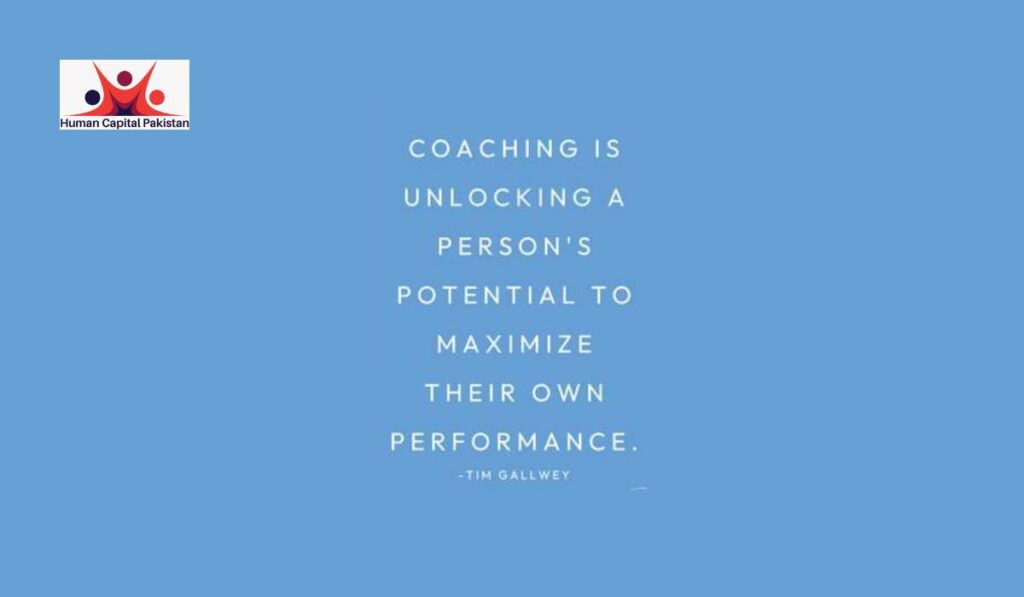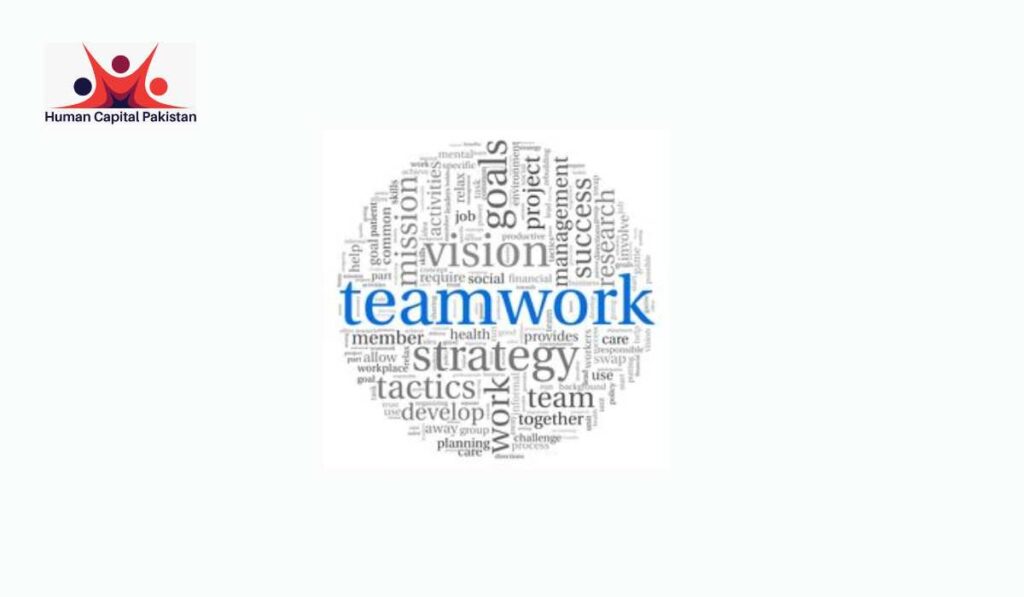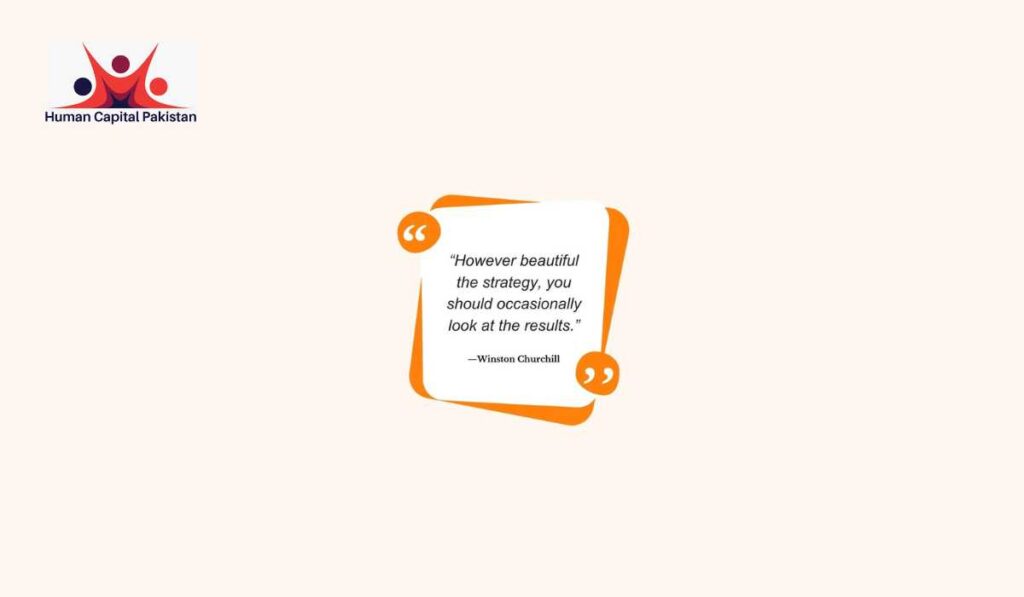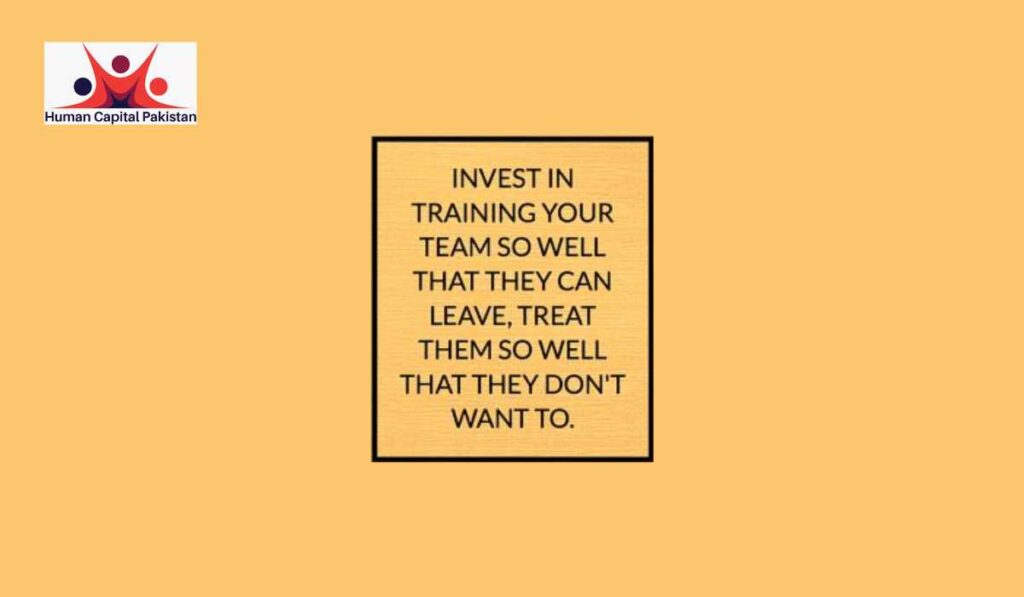“The aim of training is to instill a sense of mastery, confidence, and the ability to overcome challenges.” — Robin Sharma
Training isn’t just an option; it’s essential. A well-designed training program is the foundation of both personal and professional growth. Successful training programs equip individuals with the skills they need to advance and provide organizations with the resources to succeed. But what really makes a training program successful?
This article aims to present the key elements of a successful training program that lead to effective training initiatives that meet and exceed expectations.
Table of Contents
- The Core of Successful Training Programs
- 1: Understanding the Learners’ Needs
- Needs Assessment is Crucial for Successful Training Programs
- 2: Clear Objectives and Outcomes
- Structuring Content For Successful Training Programs
- Example for Outcome-based Training: Cisco’s Certification Programs
- 3: Engaging and Interactive Content
- Successful Training Programs use interactive content.
- Example for Interactive Training: Adobe’s Creative Cloud Workshops
- 4: Continuous Feedback and Improvement
- The Role of Technology in Successful Training Programs
- 5: Using Technology for Enhanced Learning
- 6: Blended Learning Approaches
- Using Blended Learning Approaches to Create Successful Training Programs in Corporate Settings
- 7: Measuring the Success of Training Programs: Metrics and Analytics
- 8: Aligning Objectives With Organizational Goals
- 10: Focusing on Personalized Learning Experiences
- Conclusion
The Core of Successful Training Programs

1: Understanding the Learners’ Needs
One of the foundational elements of a successful training program is a deep understanding of the learners’ needs. This understanding is not just a nice-to-have—it’s essential. An effective training program must be targeted and specific, addressing the actual gaps and challenges that the learners face. But how can you create targeted content without first assessing those needs?
I want you to Imagine this scenario: You’re conducting a communication workshop, and your trainees are eager to develop conflict management skills. However, instead of addressing this need, you spend the entire session teaching “the types of communication.” Do you think this training was effective?
While the content was informative and essential to teach, it missed the mark entirely because it was not in alignment with the learners’ needs. As a result, the trainees walk away without the practical skills they were seeking, and the training ultimately falls short of its goals. In this case, despite your best intentions, you did not deliver a successful training program.
Benefits of Adopting a Learner-Centric Approach
This is why adopting a learner-centric approach is crucial. When you tailor the training to the learners’ actual needs, it becomes not only more relevant but also more engaging and impactful. The content resonates with the audience because it speaks directly to their challenges and goals. Learners are more likely to be invested in the process, actively participating and applying what they’ve learned.
Furthermore, this approach not only increases engagement but also enhances the amount of information the participants retain. It’s very straightforward: participants will only listen attentively to and retain information they want and need. In other words, when learners feel that the training is directly relevant to their work or personal development, they are more likely to invest time and effort into the learning process.
As the saying goes, “You can’t hit a target you can’t see.” Similarly, you can’t create successful training programs without first identifying your learners’ exact needs. By making the effort to understand what your audience wants and needs to learn, you ensure that your training is not just a generic session but also a valuable, targeted experience that truly makes a difference. In other words, when you provide your trainees with target training programs, you equip them with skills and strategies they previously lacked.
“The best training program in the world is absolutely worthless without the will to execute it properly, consistently, and with intensity.” — John Romaniello
Needs Assessment: The Starting Point

To know what the learners/trainees/participants want to learn, you have to conduct a needs assessment. Conducting a comprehensive needs assessment is the first step towards developing successful training programs. This process involves gathering data on the learners’ current knowledge, skills, and attitudes to identify the gaps that need to be addressed.
Here are some of my favourite examples:
Needs Assessment In The Corporate Setting:
In a corporate environment, a needs assessment begins with surveying employees to determine how proficient they are at using specific software tools or systems. If the goal is to improve data analysis skills across the team, you might use surveys or performance metrics to identify who needs more training in data visualization techniques. In Addition, interviews or focus groups can be conducted to explore leadership skills within the management team, which can help uncover areas where additional support or development might be required (for example, team building). Following this, the organization can specific modules to deliver target, successful training programs.
Google’s Approach to Needs Assessment
Google is known for its data-driven approach to employee development. Before launching its “Google Career Certificates” program, the company conducted extensive research to understand the skills gaps in various industries. By analyzing job market data and consulting with industry experts, Google was able to create training programs that directly addressed the skills that were in high demand, ensuring the program’s relevance and effectiveness.
Example: Targeted Training at IBM
A very good example of an effective needs assessment leading to highly successful training programs is IBM’s “Think Academy.” Before launching this initiative, IBM conducted extensive research to understand the skills their employees needed to stay competitive in a rapidly evolving tech industry. Following the thorough needs assessment, the program was then tailored to address these specific needs, focusing on areas such as cloud computing, data analytics, and artificial intelligence. As a result, IBM was able to upskill its workforce effectively, which kept the company at the forefront of innovation.
Expert Insight on Needs Assessment
Peter Drucker, is a renowned management consultant, educator, and author. He once said, “If you can’t measure it, you can’t improve it.” This principle applies directly to training programs. Without a clear understanding of what the learners need, it’s impossible to design a program that effectively bridges the gap between their current abilities and the desired outcomes.
The Fifth Discipline: The Art & Practice of The Learning Organization

For any individual interested in organizational management and delivering successful training programs, I recommend reading Peter Senge’s book The Fifth Discipline: The Art & Practice of the Learning Organization. In his book, Senge emphasizes the importance of tailoring training to the needs of the learner. Senge argues that organizations must cultivate an environment where continuous learning is encouraged, and this begins with understanding what learners need to develop.
By thoroughly assessing and understanding your learners’ needs, you lay the groundwork for successful training programs that have a guaranteed impact on the participants.
Needs Assessment is Crucial for Successful Training Programs
Conducting a needs assessment is not just about identifying gaps; it’s about ensuring that the training program is designed to meet the real needs of the learners. Without this critical step, there’s a risk of developing a training program that is well-intentioned but ultimately ineffective because it doesn’t address the actual needs of the audience.
Organizations and Team Leaders need to invest time and effort into a thorough needs assessment to lay the groundwork for successful training programs that are relevant and impactful.
2: Clear Objectives and Outcomes
To conduct successful training programs, we need to ensure that they have clear, concise, and measurable objectives. Setting these objectives from the beginning is crucial because they guide the entire training process, from content development to the methods used and the evaluation of success.
Setting Clear Objectives For The Training Program
The first step in creating clear objectives is to define what success looks like for the training program. In other words, you need to be clear on what constitutes successful training programs so you know what to work towards.
Success should be more than just a vague idea; it needs to be specific and measurable. This means setting clear targets for what the learners should achieve by the end of the training. For example, if the training is designed to improve customer service skills, a clear objective might be that “95% of participants will be able to demonstrate effective conflict resolution techniques in role-play scenarios by the end of the program.”
For more information, read: How to set training objectives.
Structuring Content For Successful Training Programs

Clear objectives also help structure the training content. Once you know what success looks like, you can design the content to specifically address these goals. For instance, if one of the objectives is to improve presentation skills, the training might include modules on crafting engaging presentations, using visual aids effectively, and handling questions from the audience. Each section of the training would then be designed to meet these specific objectives, ensuring that all content is relevant and focused.
Choosing Appropriate Training Methods for Successful Training Programs
Once you have well-defined training objectives, you can select the most appropriate training methods. For example, if your goal is to enhance hands-on skills, practical workshops and simulations might be the best approach. However, lectures and readings might be more suitable for objectives related to theoretical knowledge. Moreover, if the training aims to improve team collaboration, incorporating team-building exercises and group projects will help achieve this goal.
Microsoft’s Approach to Training
Microsoft’s approach to training in its leadership development programs emphasizes clear objectives. Microsoft sets specific, measurable goals for its leadership training, such as improving team management skills by 30% as measured by performance reviews and feedback. This clarity helps in designing targeted content and choosing effective training methods, such as interactive workshops and mentorship programs.
Outcome-Based Training
The primary goal of all successful training programs is to achieve the desired outcomes. That’s why outcome-based training is so crucial—it’s all about focusing on clear, well-defined objectives. This approach ensures that every aspect of the training program is purposefully designed with the end results in mind.
For example, if an organization wants to improve its customer service, the training program might have a measurable goal like reducing customer complaints by 20% within six months. Every element of the training, from role-playing scenarios to communication workshops, would be structured to help achieve this specific outcome. This ensures that the training isn’t just theoretical but directly tied to practical, real-world results.
Example for Outcome-based Training: Cisco’s Certification Programs
Cisco’s certification programs are a great example of outcome-based training. These programs are designed with clear objectives, such as achieving proficiency in network management or cybersecurity. Cisco aligns these training programs with industry needs and the career aspirations of IT professionals. As a result, individuals who complete these certifications are equipped with the skills that are in demand, leading to better job opportunities and career growth. At the same time, the organization benefits from having highly skilled professionals on board.
Successful Training Programs Deliver Tangible Results

By setting measurable goals and focusing on achieving specific outcomes, outcome-based training ensures that the program delivers tangible and valuable results. This approach turns training from a routine exercise into a strategic tool that drives both personal and organizational success.
3: Engaging and Interactive Content
What is the true purpose of a training program? Is it simply to provide information and knowledge?
Not at all. In today’s advanced world, people can access unlimited amounts of information and knowledge with just a few clicks. Therefore, successful training programs do more than just provide information—it’s not just about delivering information; it’s about actively engaging learners in the process. It’s about transforming knowledge into action, guiding participants through the hands-on experiences the trainers have gained, practical applications, and real-world scenarios that help them apply what they’ve learned.
Successful Training Programs use interactive content.
One of the most important elements of any effective training program is the use of engaging and interactive content. Traditional, passive learning methods, where participants simply listen to lectures or watch presentations, are quickly becoming outdated. Research shows that people learn better when they are actively engaged in the material. This is where interactive learning comes into play.
Why Engagement Matters

Let me ask you a simple question: can you teach anyone who’s in a bored state of mind? No, right? People can know that this content is important and that they need to listen, yet they can not force themselves to concentrate and listen. This is why engaging content is so important.
Engaging content captures the learners’ attention and keeps them interested throughout the training. When participants are actively involved in the learning process, they are more likely to absorb and retain the information. For example, instead of just reading about communication strategies, learners can participate in role-playing exercises where they practice those strategies in real time. This hands-on experience not only makes the learning process more enjoyable but also reinforces the material in a way that’s more likely to stick with them.
Interactive Learning Techniques for Successful Training Programs
Here are my top favourite interactive exercises:
1: Role-Playing
- Role-playing involves learners acting out scenarios related to the training topic. This technique allows participants to practice real-life situations in a safe environment.
- Example: In customer service training, participants might role-play handling difficult customers, which helps them develop confidence and communication skills.
Role-playing encourages active participation and helps learners internalize concepts by practising them.
2: Group Discussions
- Explanation: Group discussions involve learners talking about a topic or problem together. It allows them to share ideas, perspectives, and experiences.
- Example: In leadership training, a group might discuss the pros and cons of different leadership styles. Each member can share their insights, leading to a richer understanding of the topic.
Group discussions promote critical thinking, collaboration, and deeper understanding by exposing learners to diverse viewpoints.
3: Simulations
- Simulations recreate real-world scenarios in a controlled environment. Learners can experiment with different approaches and see the outcomes without real-world consequences. In other words, simulations is a way of providing the participants with hands-on experience, leading to successful training programs.
- Example: In medical training, a simulation might involve treating a patient with a specific condition, allowing learners to practice diagnosis and treatment without risk.
Simulations provide hands-on experience and help learners apply theoretical knowledge in practical situations.
4: Case Studies
- Case studies present real or hypothetical situations related to the training topic. Learners analyze the case, identify problems, and propose solutions.
- Example: In business training, a case study might involve analyzing a company’s failed marketing campaign, discussing what went wrong, and suggesting ways to improve it.
Case studies encourage analytical thinking, problem-solving, and the application of knowledge to real-life situations.
5: Quizzes and Polls
- Explanation: Quizzes and polls are short, interactive assessments that check learners’ understanding and keep them engaged. Such exercises make individuals feel like their feedback and involvement are valued.
- Example: After a module on workplace safety, a quiz might test learners on key safety procedures. Polls can gauge opinions on certain practices, making the learning experience more interactive.
Quizzes and polls provide immediate feedback, helping learners evaluate their own understanding after the training module and stay engaged. Well-constructed quizzes and polls can be a great way to deliver successful training programs.
Group Workshops
- Explanation: Group Workshops are interactive sessions in which learners work on specific tasks or projects in groups. They are given hands-on activities that they complete together.
- Example: In a coding workshop, participants might work together to build a simple app, applying what they’ve learned in real time.
Group Workshops provide a great opportunity for collaboration, allow for practical application, and reinforce learning through active participation. Most importantly, group workshops teach participants how to work with different people and manage conflicts and differences if they occur.
Games and Gamification
- Explanation: Games and gamification use game-like elements to make learning more fun and engaging. This could include competitions, point systems, and rewards.
- Example: A sales training session might include a game in which participants earn points for correctly handling customer scenarios, with a leaderboard showing the top performers.
Gamification motivates learners by making the process enjoyable and rewarding, leading to better engagement and retention.
Interactive Videos
- Explanation: Interactive videos include elements like quizzes, clickable links, or decision points that require learner interaction throughout the video.
- Example: A video on project management might pause at key moments to ask learners what they would do next, guiding them through different outcomes based on their choices.
Interactive videos keep learners engaged by requiring active participation and help reinforce learning through immediate feedback.
Problem-Based Learning (PBL)
- Explanation: Problem-based learning presents learners with a problem to solve, usually without a clear solution, which requires them to use critical thinking and collaboration to find answers.
- Example: In an engineering course, learners might be asked to design a bridge that meets certain specifications, encouraging them to apply their knowledge creatively.
PBL develops problem-solving skills, encourages independent thinking, and makes learning more relevant by tying it to real-world challenges. Including PBL activities in your training modules is one of the best ways to deliver successful training programs that leave participants fully equipped with the target skill.
Example for Interactive Training: Adobe’s Creative Cloud Workshops
Adobe’s Creative Cloud workshops are a great example of using engaging and interactive content in training. Instead of simply lecturing about design software, Adobe provides participants with hands-on opportunities to create their own projects using the software. This approach allows learners to immediately apply what they’ve learned, making the training more practical and memorable.
To sum it all up, by incorporating engaging and interactive content, you make the training more dynamic and effective. Instead of creating a stereotypical classroom-like environment, you create a conducive learning environment in which participants enjoy and learn. As a result, participants are more likely to stay focused, participate actively, and, most importantly, retain the information long after the training is over.
4: Continuous Feedback and Improvement

Feedback is one of the most important parts of all successful training programs. It’s not just about delivering content; it’s about constantly improving that content to ensure it meets the needs of the learners. Continuous feedback helps you refine and adjust the training program, making it more effective and relevant over time.
Why Feedback Matters for Successful Training Programs
Communication is always a two-way process, including teaching. Therefore, without some kind of feedback from the learners, a workshop can never be as effective as it should be. Feedback serves as a mirror, showing what’s working well in the training program and what needs to be improved. By regularly collecting feedback from participants, trainers can identify areas where learners may be struggling or disengaged. This allows the trainers to make timely adjustments to the program, which ensures that it remains aligned with the learners’ needs and the organization’s goals.
Example: Employee Training Programs
I give you the example of a company that runs a leadership training program. After each session, participants fill out a feedback form rating different aspects of the training, such as the relevance of the content, the effectiveness of the trainer, and the overall experience. If multiple participants indicate that a particular module on conflict resolution is confusing or unhelpful, the trainers can revisit that section, perhaps adding more practical examples or adjusting the teaching approach. This continuous feedback loop helps improve the program, making it more effective for future participants. Most importantly, it gives the learners what they want.
Immediate vs. Long-Term Feedback in Training Sessions
As mentioned earlier, all successful training programs must have an efficient feedback mechanism. Feedback can be both immediate and long-term. Immediate feedback might involve asking participants to share their thoughts at the end of each session, while long-term feedback might be collected after participants have had a chance to apply what they’ve learned in their jobs.
For example, after a technical skills workshop, immediate feedback might reveal that participants struggled with a specific tool. In contrast, long-term feedback collected a few months later might show whether the participants were actually able to learn the skills and apply them in real-life settings.
Adjusting to Learner Needs
Continuous feedback also allows trainers to adapt the program to the evolving needs of the learners. For example, in a digital marketing course, participants might initially focus on social media strategies. However, if feedback shows a growing interest in content marketing, the course content can be adjusted to include more modules and information on that topic. This adaptability keeps the training program relevant and ensures that it evolves with the learner or industry.
Example: Google’s Manager Training Program
Google’s Manager Training Program is a great example of how continuous feedback leads to improvement. The program initially focused on general management skills, but feedback from participants highlighted the need for more tailored content based on the specific challenges Google managers faced. In response, Google adjusted the program to include case studies and scenarios relevant to their work environment, resulting in a more impactful training experience that directly addressed the participants’ needs.
The Role of Technology in Successful Training Programs

5: Using Technology for Enhanced Learning
Can you imagine one day without any form of technology? No, right?
Technology is a major aspect of every area of life today, including training programs. The use of e-learning platforms, virtual classrooms, and mobile learning apps has transformed traditional training methods, making teaching and coaching more flexible, accessible, efficient, and tailored to individual needs.
I believe success means adapting to the changing world. Delivering successful training programs today cannot be fruitful without making good use of technological resources; technology can be an amazing tool for trainers and managers to lead successful training programs.
Why Technology Matters in Training
The biggest advantage of technology is that it is flexible; you can tailor it to meet the very specific needs of billions of people around the world. For this very reason, technology has made training more accessible and adaptable to different learning styles. In the past, training often required physical attendance in a classroom, which could be time-consuming and limiting. Today, technology allows learners to access training materials anytime, anywhere, and on any device. This flexibility is particularly important in a globalized world where organizations often have teams spread across different time zones and locations.
An example can be the thousands of online seminars that take place on Zoom or the online learning courses individuals can take on Coursera.
Example: IBM’s Global Training Program
IBM successfully implemented a global training program using e-learning platforms that allowed employees from different parts of the world to participate in the same training sessions. By offering courses online, IBM ensured that all employees, regardless of their location, had equal access to the same high-quality training. This approach not only saved costs associated with travel but also made it easier for employees to fit learning into their busy schedules.
Technology Helps Create Interactive and Engaging Content
All successful training programs will contain engaging and interactive content and activities to ensure optimized learning. Technology allows for the creation of interactive and engaging content, such as videos, simulations, quizzes, and gamified learning experiences. These elements make learning more enjoyable, dynamic, and engaging because learners are engaged in active learning instead of boring, passive learning.
Deloitte’s Virtual Reality Training
Deloitte used virtual reality (VR) technology to create an immersive training program for its employees. This program can be considered as one of the most successful training programs delivered. The VR simulations allowed employees to practice complex scenarios, such as negotiating deals or managing difficult conversations, in a realistic virtual environment. This interactive approach not only made the training more engaging but also improved the employees’ ability to apply what they learned in real-world situations.
Technology Helps Increase Cost Effectiveness
Technology-based training programs can be more cost-effective than traditional in-person training. This is because virtual training sessions eliminate the need for physical materials, travel, and venues, which can help organizations save significant amounts of money while still delivering high-quality training.
Example: British Airways’ E-Learning Transition
British Airways transitioned from traditional classroom training to an e-learning platform to train its staff on new safety protocols. The move not only reduced training costs but also allowed the airline to train a larger number of employees in a shorter period. The e-learning platform provided consistent training across all levels of staff, ensuring everyone was up to date with the latest safety standards.
6: Blended Learning Approaches

Blended learning is a powerful approach that combines traditional face-to-face instruction with online learning. This technique is very powerful because by integrating these two methods, blended learning gives learners the flexibility to learn at their own pace while still enjoying the benefits of direct interaction with instructors. Many students face this barrier when they try to use online resources to study. Blended learning approaches solve this issue: they give you the benefit of online learning resources while allowing interaction with an in-person teacher/instructor.
This approach is one of my favourites. It provides a more comprehensive learning experience and caters to different learning styles, making it an effective choice in modern education and training programs.
Why Blended Learning Works in Successful Training Programs
Blended learning works because it combines the strengths of traditional and online learning methods into one cohesive experience. Traditional classroom settings allow for real-time interaction, where learners can ask questions, engage in discussions, and receive immediate feedback. On the other hand, online learning provides flexibility, allowing learners to access materials anytime, anywhere, and progress at their own pace.
By blending these approaches, learners get the best of both worlds. They can benefit from the structure and social interaction of a classroom while also taking advantage of the convenience and flexibility of online resources.
Example: Harvard Business School’s HBX Program
Harvard Business School’s HBX program is a prime example of blended learning in action. The program combines online coursework with live, interactive sessions, where students can discuss case studies and participate in group activities. This approach allows students to learn at their own pace while still benefiting from the interactive aspects of a traditional classroom. The success of the HBX program is a prime example of the effectiveness of blended learning approaches.
Using Blended Learning Approaches to Create Successful Training Programs in Corporate Settings
In the corporate world, blended learning techniques can be a smart tool to construct successful training programs to train employees. A company might offer an initial in-person workshop followed by online modules that employees can complete in their own time. For example, an organization could conduct a live training session on leadership skills and then provide online resources, such as videos, articles, and quizzes, for employees to review afterwards. This approach allows employees to reinforce what they’ve learned and apply it to their daily work at their own pace.
Example: KPMG’s Blended Learning Approach
KPMG is a global network of professional services firms that uses a blended learning approach to training its employees. The company combines in-person workshops with online courses, which allows employees to develop new skills while balancing their work commitments. The flexibility of the online components means that employees can fit learning into their busy schedules, making the training more accessible and effective.
7: Measuring the Success of Training Programs: Metrics and Analytics

How do we decide which training programs were successful? Measuring the success of a training program is not just about how many people attended. To truly understand how effective a program is, it’s important to track specific metrics that show the real impact on learners and the organization. Organizations can use metrics like knowledge retention, behaviour change, and improvements in performance to provide a clearer picture of whether the training is achieving its goals. By using analytics tools, organizations can gather valuable data to see what’s working well and identify areas for improvement.
3 key Matrices to Measure Training Success
- Knowledge Retention
One of the primary goals of successful training programs is to ensure that learners retain the information they’ve been taught. Assessments such as quizzes, tests, or practical exams can be used to measure knowledge retention. For instance, after a safety training program in a manufacturing company, employees might be tested on their understanding of safety protocols. The results can reveal how well the training has been absorbed and whether any additional sessions are needed.
Example: Employee Onboarding
Consider an onboarding program for new employees. After completing the training, employees might take a test to see how much they remember about company policies, procedures, and job-specific tasks. If the test results show high retention rates, it indicates that the onboarding program is effective. However, if many employees struggle with the test, it may suggest that the training materials need to be revised or that follow-up sessions are necessary.
- Behavior Change
Successful Training programs are not just about imparting knowledge; they also focus on changing behavior. For example, if a company conducts a leadership training program, it would want to see improvements in how participants manage teams, make decisions, and handle conflicts. Surveys, peer reviews, and performance evaluations can help measure changes in behaviour after the training.
Case Study: Leadership Training in a Corporate Setting
A large corporation implemented a leadership development program aimed at improving managerial skills among mid-level managers. Before the training, these managers were rated on their leadership abilities by their teams. Six months later, a follow-up survey was conducted. The survey showed a significant improvement in how these managers communicated with their teams, resolved conflicts, and motivated employees. This behaviour change demonstrated the success of the training program.
- Impact on Performance
Ultimately, successful training programs should lead to improved performance. Depending on the goals of the training, this could mean increased productivity, higher sales, better customer satisfaction, or reduced error rates. For example, after a sales training program, a company might track the performance of the sales team to see if there’s an increase in sales figures.
Example: Sales Training
A retail company conducted a sales training program focused on upselling techniques. After the training, the company monitored sales performance over the next quarter. They found that employees who participated in the training consistently achieved higher sales figures than those who didn’t. This clear improvement in performance showed that the training had a direct positive impact. To sum up, successful training programs will always show tangible improvements and results.
8: Aligning Objectives With Organizational Goals
All training programs conducted for the participants of an organization should align with the goals of that organization. In addition, those training programs should also align with the individual learners’ career aspirations. For instance, if an organization aims to enhance its leadership capabilities, the training objectives might focus on developing key leadership skills like decision-making and team management. At the same time, individual learners might be looking to advance their careers by acquiring these skills. Ensuring that the training objectives meet both the organization’s needs and the learners’ personal goals makes the program more relevant and engaging.
“Training and development aren’t just about learning new skills—they’re about aligning those skills with the strategic goals of the organization and the personal aspirations of the individuals.” – John Maxwell
9. The Future of Training Programs: Emphasizing Lifelong Learning
“Live as if you were to die tomorrow. Learn as if you were to live forever.”
— Mahatma Gandhi
We live in a world where lagging for even a short while can make us feel left behind. In such times, the ability to adapt and grow is crucial. The traditional approach of training employees once and expecting them to remain relevant for years is no longer effective. Instead, a key element of successful training programs is fostering a culture of lifelong learning. This approach encourages continuous skill development and knowledge acquisition, which ensures that employees are always prepared to meet new challenges.
Why Lifelong Learning is Essential
Lifelong learning is perhaps the fastest (and only way) to success; people who learn more also refine their skills and expertise according to the latest demands. As industries evolve, so do the skills required to excel in them; new technologies, methodologies, and market demands are constantly emerging every day. Lifelong learning helps employees stay up-to-date with these changes, making them more versatile and valuable. It’s not just about keeping pace with industry trends—it’s about staying ahead. Therefore, successful training programs must always keep lifelong learning as a key priority when defining objectives and creating modules.
How to Implement Lifelong Learning in Successful Training Programs
To successfully integrate lifelong learning into training programs, organizations should provide diverse learning opportunities. This can include:
- Online Courses and E-Learning Platforms: Provide access to a wide range of online courses that employees can take at their own pace. These platforms can cover everything from technical skills to soft skills, ensuring a well-rounded development.
- Workshops and Seminars: Regular workshops and seminars on the latest industry trends can help employees stay informed and connected to the latest developments in their field.
- Mentorship Programs: Pairing employees with experienced mentors can facilitate knowledge transfer and provide guidance on career development.
- Learning Management Systems (LMS): Implementing an LMS allows employees to track their learning progress and access resources anytime, anywhere.
10: Focusing on Personalized Learning Experiences

The future of training is moving towards personalization. Everything, from mobile phones, courses, and even cars, has become personalized. Furthermore, this era has seen a surge of entrepreneurs who are tapping specific, unique niches. In such times, organizations and trainers need to focus on making specific, tailored programs for their participants. In other words, every participant/group of participants will have specific learning needs and objectives, even if its the same topic. For example, relationship management training for a salesperson will be far different from that of a psychologist.
Therefore, successful training programs must be tailored to each individual’s needs and preferences. This approach not only makes successful training programs more productive and engaging but also significantly boosts their effectiveness. By providing personalized learning experiences, organizations can ensure that each learner gets the most out of their training.
Why Personalization Matters
Personalized learning recognizes that each individual has unique strengths, weaknesses, and learning styles. What works well for one person might not be effective for another. Traditional one-size-fits-all training programs often fail to address these differences, leading to disengagement and suboptimal results. Successful training programs that prioritize personalized learning adapt to each learner’s needs, making the training process more relevant and impactful.
Conclusion
As Peter Drucker wisely said, “The best way to predict the future is to create it.”
By implementing these key elements, whether you’re a trainer, HR professional, or organizational leader, you can create successful training programs that not only meet immediate needs but also empower learners, boost business success, and shape the future of your organization.
Did you like this article? If so, visit our blog site.




